High Blood pressure affects millions worldwide, yet managing it doesn’t always require complex interventions. In fact, incorporating easy yoga poses into your daily routine can help lower blood pressure and improve overall wellbeing. This comprehensive guide will explore several effective yogic practices that may aid in hypertension management. The quest for natural remedies to manage and mitigate its effects brings us to the ancient practice of yoga. Specifically, certain easy asana for high blood pressure management offer a beacon of hope for those looking to control their BP naturally. Incorporating these asanas into your daily routine can not only help in regulating blood pressure but also contribute to overall well-being. In this comprehensive guide, we delve into the best asana for high blood pressure, asana for high BP, and blood pressure yoga asanas that are both effective and accessible to practitioners of all levels.
Why Choose Yoga?
Yoga has been shown to reduce stress levels, which often contribute to elevated blood pressure. By practicing specific asanas or poses, you can stimulate relaxation responses within the body, leading to better cardiovascular health. Additionally, regular practice promotes flexibility, balance, and strength—all essential components of maintaining good physical health.
Science Behind Yoga asanas for High Blood Pressure:
Yoga, with its roots deeply embedded in ancient Indian culture, has been scientifically proven to improve cardiovascular health. The practice of asana for blood pressure and asana for BP focuses on calming the mind, reducing stress, and promoting a balanced autonomic nervous system. This, in turn, helps in lowering high blood pressure. Studies have shown that regular practice of specific yoga asanas for high BP can significantly reduce systolic and diastolic blood pressure.
Easy Yoga Poses for High Blood Pressure Individuals:
Shavasana (Corpse Pose):
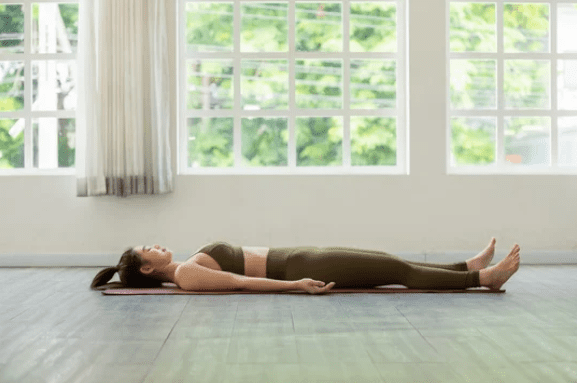
To perform Shavasana (Corpse Pose), Lie flat on your back with legs together but not touching, and arms close to the body with palms facing up. Close your eyes and take slow, deep breaths through your nose. Scan your body from head to toe, finding and releasing tension. Maintain this position for 5–15 minutes, focusing on complete relaxation.
Baddha Konasana (Butterfly Pose):
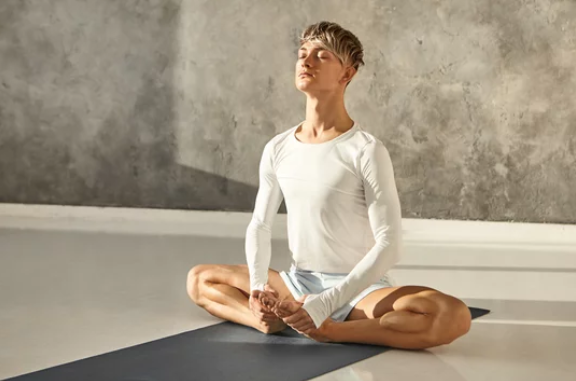
To perform Baddha Konasana (Butterfly Pose), Sit on the floor with your legs extended in front of you. Bend your knees and bring the soles of your feet together, allowing your knees to fall out to the sides. Hold onto your ankles or feet with your hands. Sit up tall and gently press your knees down towards the floor. Hold for up to one minute.
Janu Sirsasana (Head-to-Knee Forward Bend):
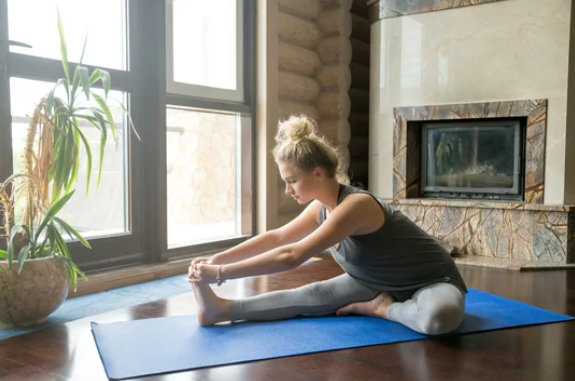
Perform Janu Sirsasana (Head-to-Knee Forward Bend) Start in Staff Pose (Dandasana) with legs stretched out in front of you. Bend your right knee and place the right foot alongside the left inner thigh. Inhale, lengthen your spine; raise your arms alongside your ears. Exhale, rotate your upper body slightly to face the left leg, and fold forward from the hips. Keep your spine long, chest open, and shoulders relaxed. Place your hands on your left leg, or take hold of your ankle or foot. Hold for 5 to 10 deep breaths, then release the pose.
Viparita Karani (Legs-Up-The-Wall Pose):
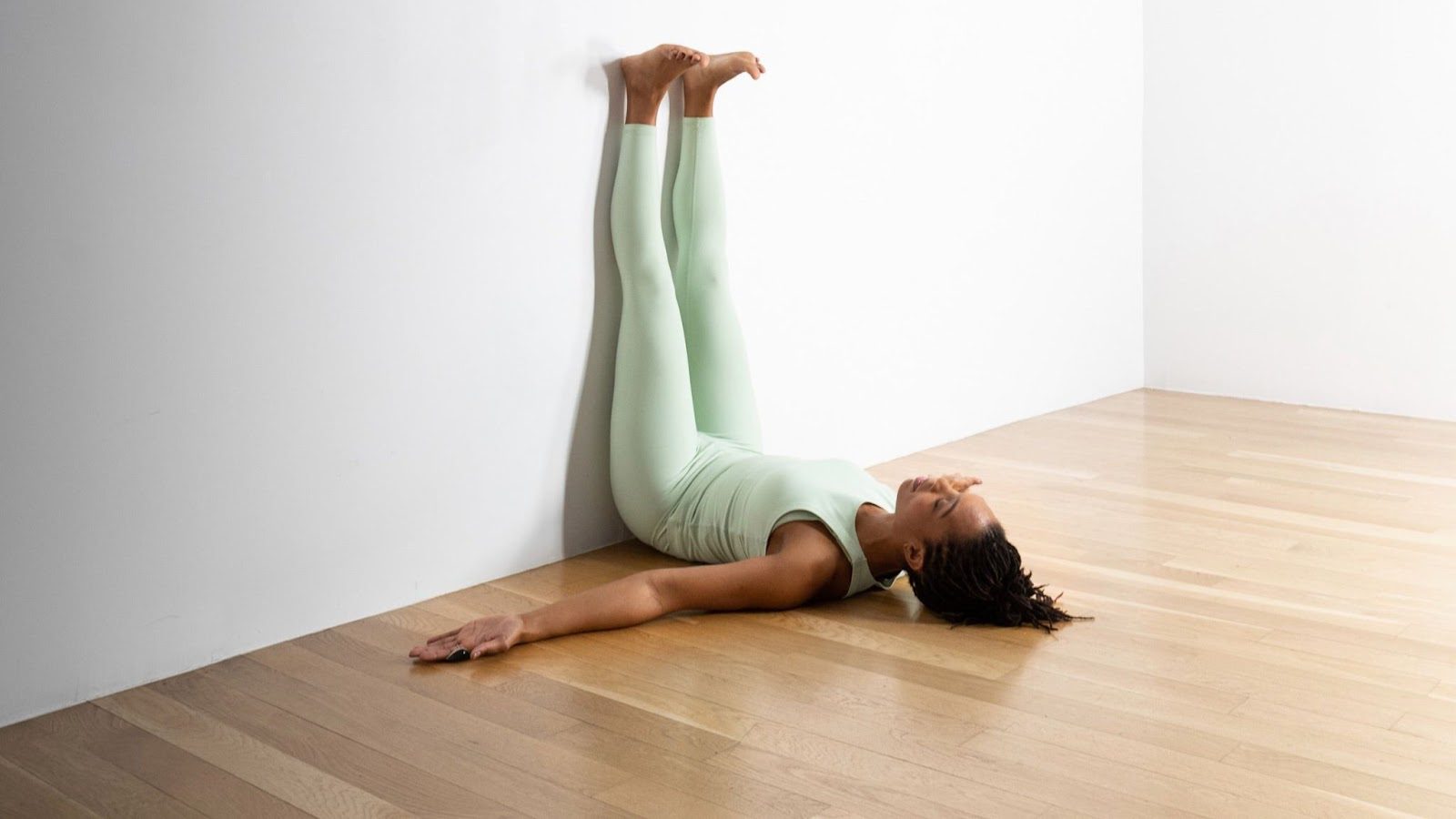
To perform Viparita Karani (Legs-Up-The-Wall Pose), Sit near a wall with your left side closest to it. Lie down on your back, ensuring your hips are touching the wall. Swing your legs upward, pressing them firmly against the wall. Straighten your legs, keeping your knees together. Allow your upper body to relax, adjusting your shoulders to rest comfortably on the floor. Ensure your pelvis remains lifted off the floor, and your tailbone is tilted slightly toward the wall. Release any tension in your body, and remain in this position for 5 to 15 minutes.
Setu Bandhasana (Bridge Pose):
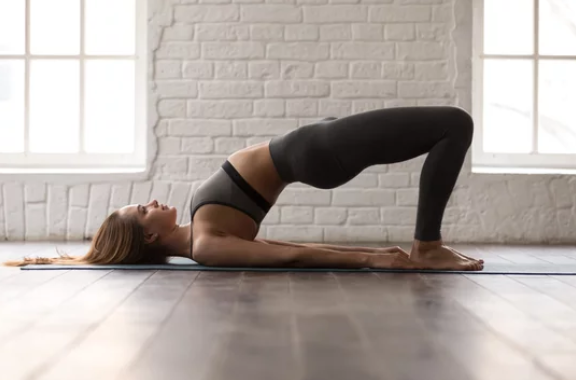
For Setu Bandhasana (Bridge Pose), Lie on your back with your knees bent and feet flat on the floor, hip-distance apart. Place your arms alongside your body, palms down. As you inhale, press your feet and arms into the floor and lift your hips up towards the ceiling. Keep your inner feet and thighs parallel and engage your glutes and hamstrings. Slide your shoulder blades down your back and interlace your fingers beneath your pelvis. Hold for 5 to 10 deep breaths, then release the pose.
Tree Pose (Vrksasana):
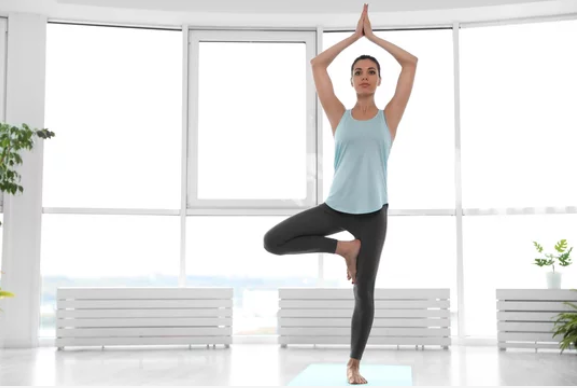
For Tree Pose (Vrksasana), Begin in Mountain Pose (Tadasana). Shift your weight onto your left leg. Ground through the four corners of your left foot. Bend your right knee, reach down with your right hand, and clasp your ankle. Bend your right knee and place your right foot on the inside of your left leg, either above or below your knee joint. Press your foot against your inner thigh, and your inner thigh back into your foot. Keep your core muscles engaged. Firm your left hip in, lengthen your spine, soften your shoulders, and tuck your chin slightly in and back. Optionally, bring your hands in front of your heart in Anjali Mudra (prayer position) or lift your arms up to the ceiling. Hold for 30 seconds to 1 minute, then lower your leg and arms down as you exhale, returning to Tadasana. Repeat on the other side.
Integrating Asana into Your Daily Routine:
Incorporating asana for blood pressure into your daily routine requires consistency and patience. Start with gentle poses and gradually increase the duration and complexity of the asanas as your body adapts. It is crucial to listen to your body and consult with a healthcare provider or a certified yoga instructor before beginning any new exercise regimen, especially if you have existing health concerns.
Lifestyle Considerations for High BP Management:
Alongside practicing asana for high BP, adopting a holistic approach to health can amplify the benefits. This includes maintaining a balanced diet, avoiding excessive salt and processed foods, staying hydrated, engaging in regular physical activity, and managing stress through meditation or mindfulness practices.
Tips for Safe Practice:
Before starting any new exercise regimen, consult with your healthcare provider if you have concerns about your ability to safely participate in these activities. If you experience dizziness, lightheadedness, or pain during practice, stop immediately and seek medical advice. Remember to breathe deeply and slowly throughout all poses.
Incorporating simple yoga poses into your lifestyle can provide numerous benefits for individuals dealing with high blood pressure. These gentle movements promote relaxation, reduce stress, and encourage healthy habits. With consistent practice, you can enhance your quality of life and manage hypertension more effectively.
Managing high blood pressure naturally is a holistic one, with easy asana for high blood pressure management playing a pivotal role. As we have explored, asana for high BP, alongside lifestyle modifications, can significantly contribute to better health and well-being. Remember, consistency is key. By integrating these gentle yet effective blood pressure yoga asanas into your daily routine, you can embark on a path towards a healthier, more balanced life.
